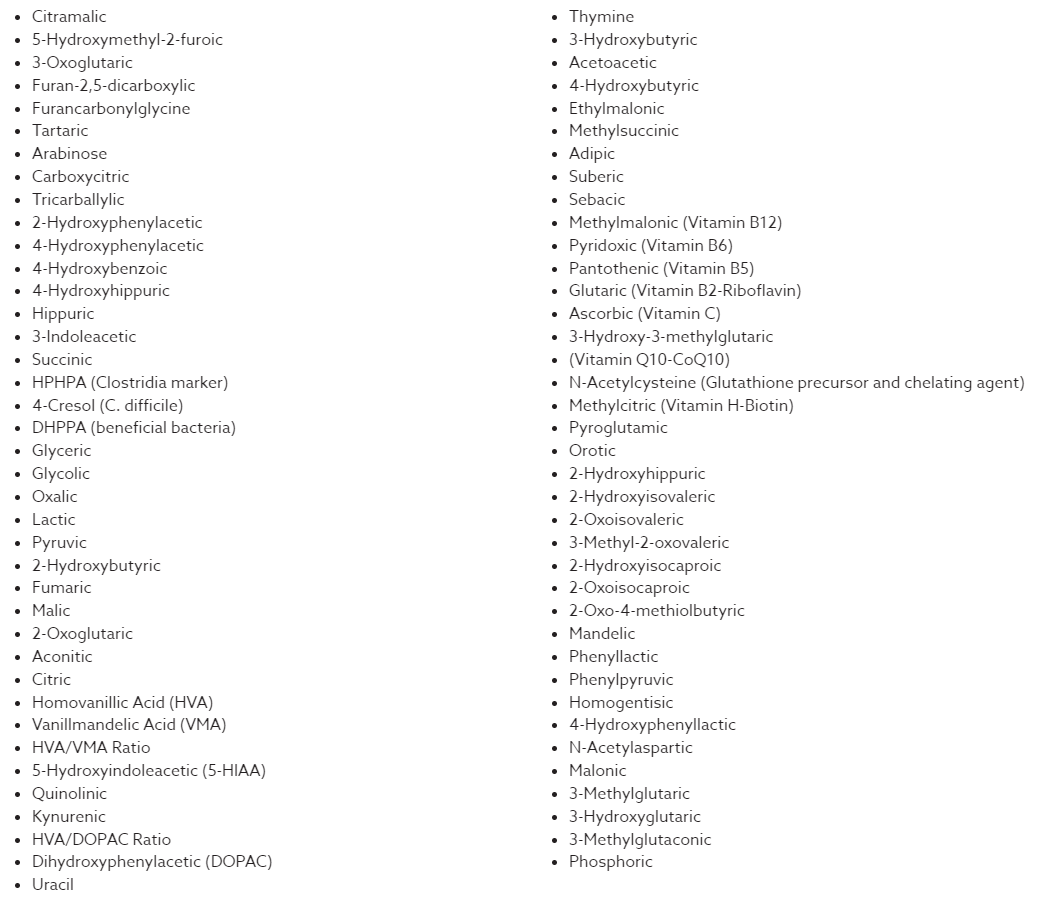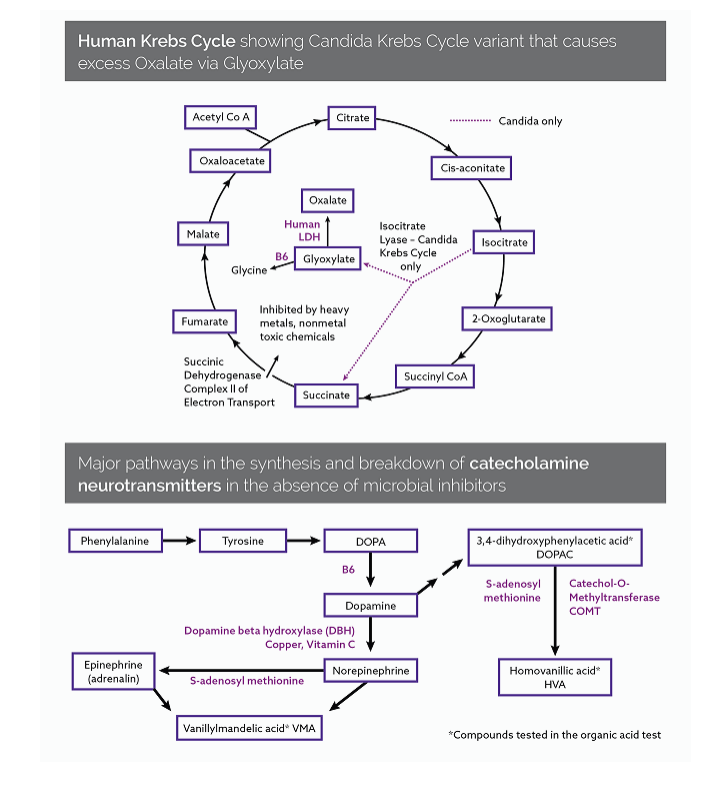Product Description
The Organic acids test will look at downstream metabolites from various pathways. It provides insight into important areas related to gut health, mitochondrial dysfunction, neurotransmitter status, detoxification, macronutrient breakdown and nutritional status. Organic acid testing is a valuable tool to assess the functional need for essential nutrients, diet modification, antioxidant protection, detoxification, and other therapies. Dr. Wilde likes to use it in conjunction with genetic testing, and micronutrient assessments to get a deeper picture of your personal physiology.
The OAT measures 76 organic acids from one easy to collect urine sample. It provides a comprehensive nutritional and metabolic snapshot of your overall health.
Why Run an Organic Acids Test (OAT)?
The Organic Acids Test (OAT) is a simple way to assess a number of metabolic pathways. It provides insight into imbalances and nutrient needs. The OAT can provide insight into a wide range of conditions, making it valuable for individuals who are experiencing complex chronic conditions.
The OAT test report gives clinical insight into:
- Intestinal Microbial Overgrowth markers evaluate for candida activity, clostridia bacteria toxins, potential mold exposure, and imbalance in the gut microflora.
- Oxalate Metabolites provide insight into oxalate levels being generated by organisms within the system or via dietary contributions.
- Glycolytic Cycle Metabolites and Mitochondrial Markers (Krebs Cycle and Amino Acid Metabolites) evaluate for metabolic efficiency (e.g., use of glucose and amino acids for energy generation) and mitochondrial dysfunction.
- Neurotransmitter Metabolites evaluate for phenylalanine, tyrosine and tryptophan metabolism which are linked to neurotransmitter status and quinolinic acid production.
- Pyrimidine Metabolites & Ketone and Fatty Acid Oxidation markers give insight into folate status and cellular turnover. As well as mitochondrial utilization of fatty acids for energy production.
- Nutritional Markers provide insight into the sufficiency of essential vitamins, antioxidants, and metabolic pathway co-factors.
- Indicators of Detoxification assess for the presence of oxidative stress via markers of glutathione sufficiency and methylation versus transsulfuration function.
- Amino Acid Metabolites may suggest functional nutrient need. Or be reflective of genetic metabolic dysfunction if a consistently, persistently elevated level of a particular analyte is noted.
- The Mineral Metabolism marker provides insight into dietary intake of phosphate and can give insights into Vitamin D levels.
Test includes interpretation, but not appointment to review.











